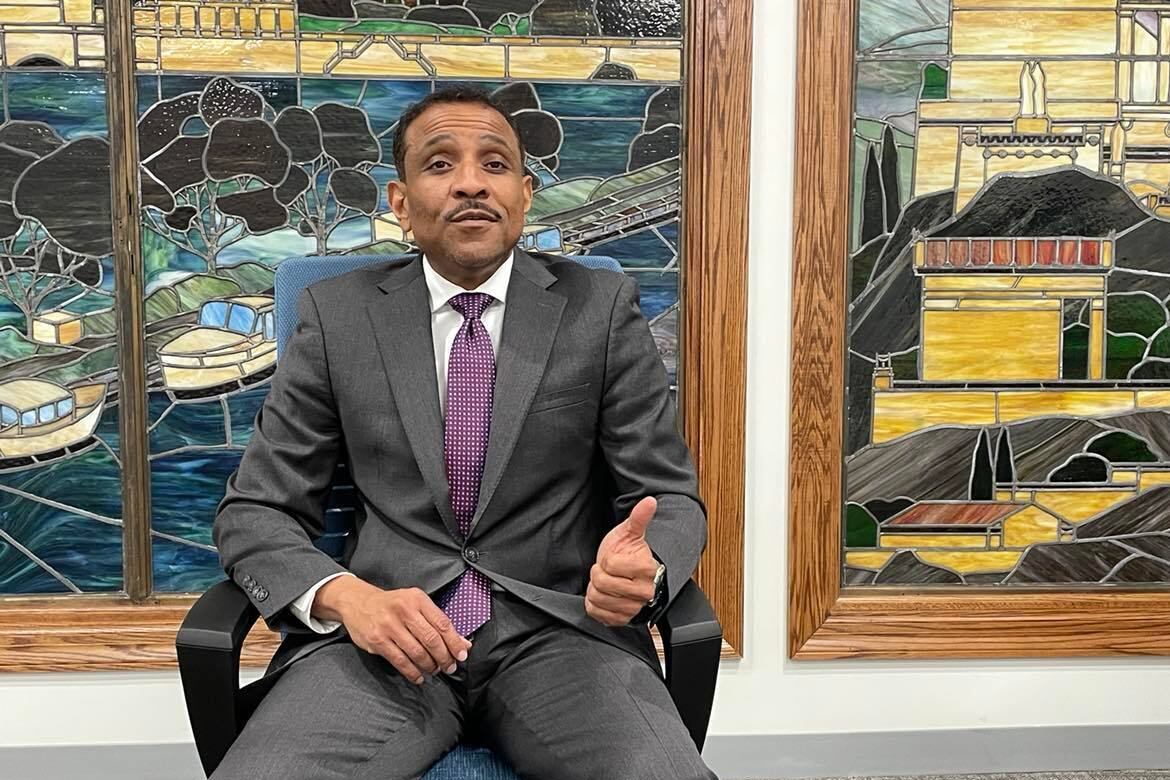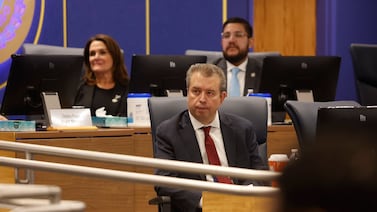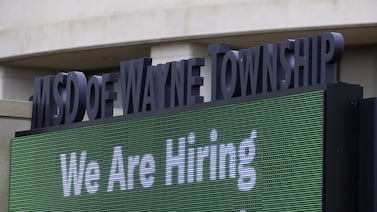An interactive website that gave families crucial information about the physical condition of Philadelphia public schools went down last month.
The site contained data on 211 schools, more than two-thirds of which were found to be in “unsatisfactory” or “poor” condition, according to a previous analysis by the Logan Center. Parents could use the site to see the results of their school’s latest inspection and which aspects of the school were in the best and worst shape.
The district is currently developing a “warehouse” for data on all schools’ academics, environments, educational suitability, safety, maintenance, and enrollment, among other data points, said Alexandra Coppadge, the district’s head of communications. They anticipate it to be completed by December.
The website going down “is deeply problematic,” said City Councilmember Nina Ahmad, a member of the Education Committee. “This lack of information is very disempowering, and I think our constituents just feel like, what is going on?”
The district’s aging infrastructure is one of its most pressing issues as it faces billions in maintenance costs to repair buildings that date as far back as 1878. Students, parents, and teachers have raised concerns over environmental hazards in their schools, such as flaking asbestos, which has forced seven school buildings to close since the start of the 2022-2023 school year.
Meanwhile, pressure is mounting on the district to release its comprehensive assessment of school buildings it promised last year. Superintendent Tony Watlington warned the City Council in April it could take an additional two years to finalize it.
Following this story’s publication, Monique Braxton, a spokesperson for the district, insisted the district was being “fully transparent” and said the interactive website was discontinued because it was not owned by the district.
“As we have updated many of the District webpages to be more transparent, easy to navigate and customer-friendly, we moved all of that information onto a district webpage,” Braxton said. “Now, the information should be easier to access for students, families, staff and community members.”
Braxton said facilities reports remain available via PDFs.
PDF reports from the most recent round of inspections are accessible on an older district website, but for only a fraction of the schools included in the interactive website.
That means thousands of Philadelphia families do not have access to updated information on structural problems in buildings or whether schools had suitable lighting, ventilation, and classroom equipment.
Parents complain to Councilman Mark Squilla’s office when they hear rumors about asbestos, lack of heat and air conditioning in schools, Squilla said in a statement.
“They deserve to know about the buildings that their children are in daily,” said Squilla, also a member of the Education Committee.
The facilities website, which was online until at least May 20, assigned scores to schools based on the quality of their infrastructure and whether the buildings adequately supported instruction.
The buildings with the lowest rankings, according to the district’s metrics, included the former Our Lady of Pompei building, which houses Bayard Taylor Elementary’s annex; The Isaac Sheppard School Building; and the former William Hunter building, which formerly housed El Centro De Estudiantes. Those buildings were constructed in 1926 or earlier.
“It is frustrating that, you know, one of the biggest crises that we’re facing in the city of Philadelphia doesn’t necessarily have a course of action,” said Councilmember Isaiah Thomas, who chairs the Education Committee. “We have people going into buildings and facilities not necessarily knowing what condition all of them are in.”
Delays hurt plans to repair Philadelphia school buildings
The facilities master plan has been hounded by delays.
Following the last district-wide assessment in 2017, which identified $4.5 billion in deferred maintenance costs, the district began a “Comprehensive School Planning Review” in 2019 but halted it in 2020 due to the pandemic.
The district, then led by former Superintendent William Hite, restarted its assessments in March 2022. It released the interactive website the following month.
Watlington took the reins as superintendent in June 2022. The following November, he told the Board of Education that the district would pause the facilities planning process until the district was closer to completing its five-year strategic plan.
Some teachers like Kate Reber at William W. Bodine High School wanted to use the data to organize families and community partners to pressure the district to fix problems at the school. In the past, there have been water leaks and ceiling tiles have fallen in classrooms at Bodine, Reber said.
“There was supposed to be a multi-year facilities planning process, and it was like, dates for meetings and all that, just disappeared,” Reber said.
After the school board’s approved the new strategic plan in June 2023, Watlington told the City Council two months later that the district would complete its facilities master plan by June 2024. But in April’s hearing, Watlington said it could take 18 to 24 additional months to complete it, noting the district had constructed a a pilot data warehouse for 30 schools but needed time to launch a project team.
The Facility Condition Assessments (FCAs) paused by the district in 2022 are more comprehensive than the asbestos-related inspections that were at the center of last year’s legal dispute between the City Council and the Board of Education.
FCAs examine a school’s major systems, like roofing and ventilation, and help the district prioritize what to repair and when, said Jerry Roseman, the director of environmental science for the Philadelphia Federation of Teachers.
“It’s the only really standardized information and dataset about the comprehensive condition of the schools,” Roseman said.
When the district first released buildings data in 2022, Reber was astonished to see Bodine’s facilities score: 60 out of 100, putting it in the “poor” conditions category. A more detailed report scored Bodine in a category of schools that “should be considered for major renovation.”
“When the planning process happens, we’d be happy to speak about it, advocate for our school, advocate with our families and students,” Reber said. “I just felt like we started something and didn’t get to see it through.”
Clarification June 14, 2024: This article has been updated to add statements from spokespeople for the School District of Philadelphia regarding how they publicize facilities data and district plans for a new data “warehouse.”








